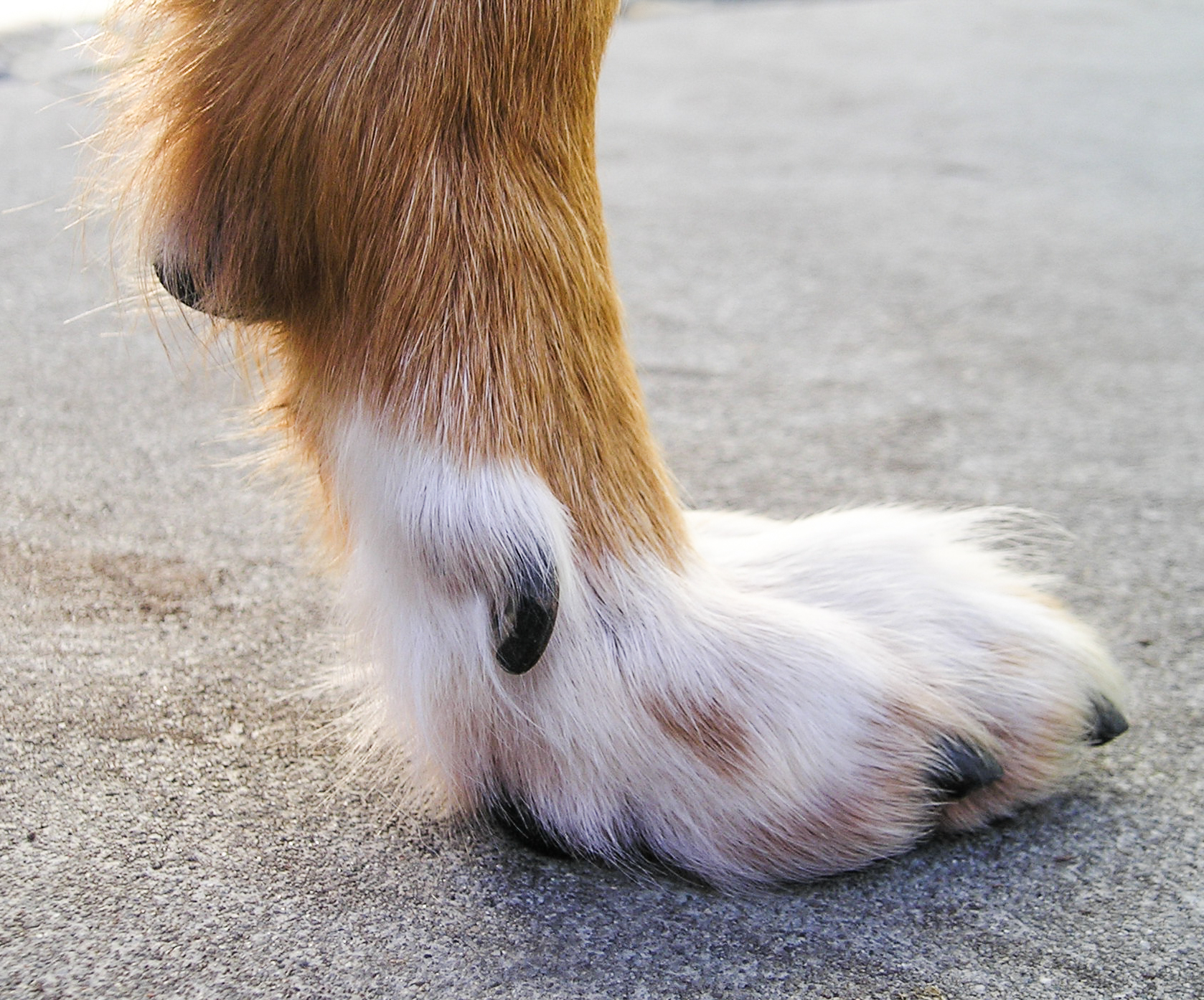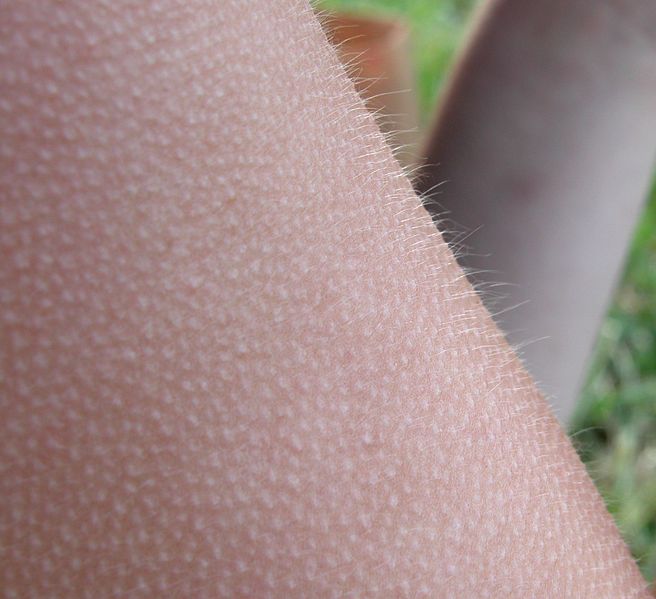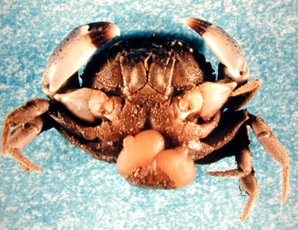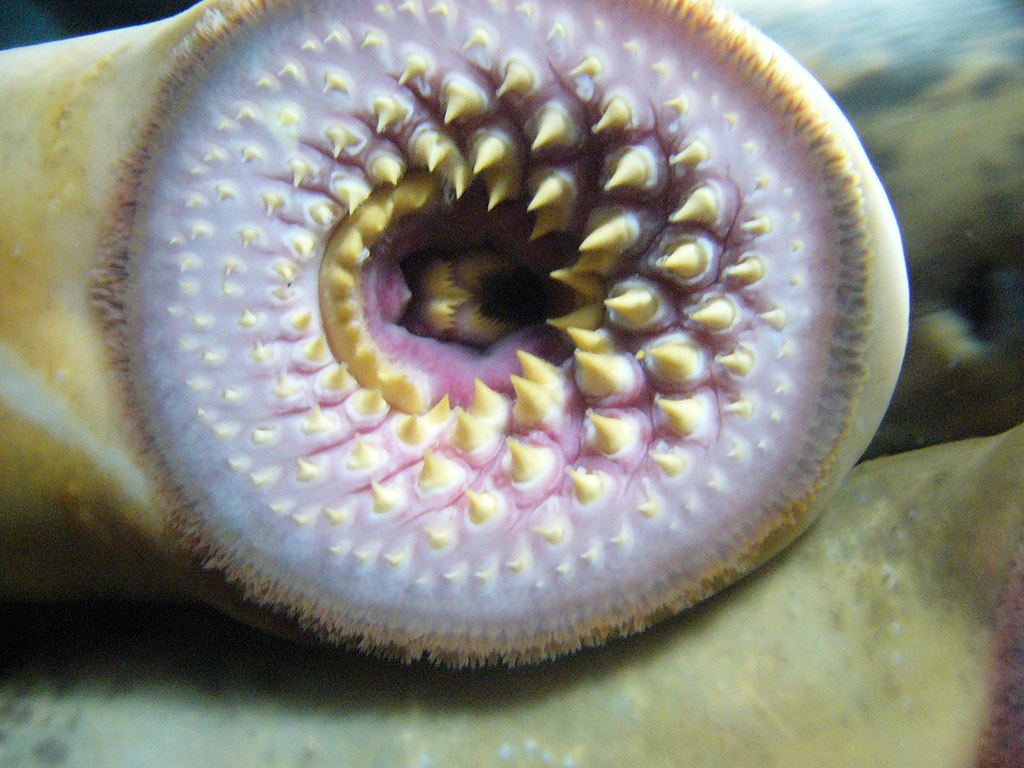It is a reflection on how emphatically the special creationists have lost the argument on origins that they continue to misrepresent evolutionary creationism. One of the lies peddled by the evolution denialists is that evolutionary creationists claim that there is no evidence for God's hand in creation. For example, one evolution denialist asserts:
Well, speaking as an evolutionary creationist, I can assure Wizgell that his claim is completely false. We call ourselves evolutionary creationists because we believe in God as creator, and regard evolution as the mechanism he employs to bring about the diversity of life we see on this planet. Furthermore, unlike special creationism which appeals to elegance and beauty in nature as 'proof' of special creation, while carefully ignoring parasitism, birth defects, predation, and suboptimal design which completely undermine the integrity of that 'proof', evolutionary creationism fully expects this. Just as human beings acting freely to bring about God's purpose on this planet are free to do good, or to enact great acts of evil, the natural world, evolving freely in order to bring about God's purpose in producing an image bearer will produce natural good, and natural evil. Unlike special creationism, only an evolutionary creationism can provide a final and complete answer to the problem of evil, while showing God's hand in the wisdom of producing a method whereby life has the ability to constantly reinvent itself to adapt to a changing world.
As usual, the evolution denialists make the fundamental error of confusing a theology of creation with a science of creation, and ignore the fact that God is frequently depicted as using secondary causes to effect his will. It is a sad reflection on how poorly understood the subject of divine agency in the Bible is, as a solid understanding of this would help evolution denialists avoid making the elementary error of thinking that divine action equates to divine micromanaging of the universe, one atom at a time.
Divine Agency
There is no excuse for being ignorant of Divine agency as examples abound in the Bible. For example, in Ex 7:4-5, God states:
It is surprising that evolution denialists fail to appreciate how God can work in the natural world through secondary causes, given that they freely accept that atmospheric physics and developmental biology allow us to explain respectively how storms form and babies develop from a single fertilised egg to an infant. Certainly, I have never heard an evolution denialist denounce a believer for accepting the scientific consensus on tornadogenesis or the development of the nervous system in the human embryo, which is puzzling if we take evolution denialist thinking consistently as the Bible specifically and emphatically declares that God is behind both:
As usual, the evolution denialists make the fundamental error of confusing a theology of creation with a science of creation, and ignore the fact that God is frequently depicted as using secondary causes to effect his will. It is a sad reflection on how poorly understood the subject of divine agency in the Bible is, as a solid understanding of this would help evolution denialists avoid making the elementary error of thinking that divine action equates to divine micromanaging of the universe, one atom at a time.
Divine Agency
There is no excuse for being ignorant of Divine agency as examples abound in the Bible. For example, in Ex 7:4-5, God states:
When Pharaoh does not listen to you, then I will lay My hand on Egypt and bring out My hosts, My people the sons of Israel, from the land of Egypt by great judgments. The Egyptians shall know that I am the LORD, when I stretch out My hand on Egypt and bring out the sons of Israel from their midst.
In fact, God explicitly states in verses 17-18 that he would strike the water with the staff in his hand in order to turn it to blood:
Thus says the LORD, “By this you shall know that I am the LORD: behold, I will strike the water that is in the Nile with the staff that is in my hand, and it will be turned to blood. The fish that are in the Nile will die, and the Nile will become foul, and the Egyptians will find difficulty in drinking water from the Nile.
God however did not literally strike the Nile, but employed secondary methods (Aaron) to achieve his aims. Likewise, God did not literally stretch out his hand to smite Egypt, but rather employed secondary methods - the plagues - to achieve these ends.
It is surprising that evolution denialists fail to appreciate how God can work in the natural world through secondary causes, given that they freely accept that atmospheric physics and developmental biology allow us to explain respectively how storms form and babies develop from a single fertilised egg to an infant. Certainly, I have never heard an evolution denialist denounce a believer for accepting the scientific consensus on tornadogenesis or the development of the nervous system in the human embryo, which is puzzling if we take evolution denialist thinking consistently as the Bible specifically and emphatically declares that God is behind both:
1 Sam 12:17-18 Is it not the wheat harvest today? I will call to the Lord, that He may send thunder and rain. Then you will know and see that your wickedness is great which you have done in the sight of the Lord by asking for yourselves a king.” So Samuel called to the Lord, and the Lord sent thunder and rain that day; and all the people greatly feared the Lord and Samuel.
Job 28:26 When He set a limit for the rain and a course for the thunderbolt,
Zech 10:1 The Lord who makes the storm clouds; and He will give them showers of rain, vegetation in the field to each man.
Jer 10:13 When He utters His voice, there is a tumult of waters in the heavens, and He causes the clouds to ascend from the end of the earth; He makes lightning for the rain, and brings out the wind from His storehouses.
Jer 51:16 When He utters His voice, there is a tumult of waters in the heavens, and He causes the clouds to ascend from the end of the earth; He makes lightning for the rain And brings forth the wind from His storehouses.
Jer 1:5 Before I formed you in the womb I knew you, and before you were born I consecrated you; I have appointed you a prophet to the nations.
Psa 139:13 For You formed my inward parts; You wove me in my mother's womb.
Job 10:10-11 Did You not pour me out like milk and curdle me like cheese; clothe me with skin and flesh, and knit me together with bones and sinews?
Job 31:15 Did not He who made me in the womb make him, and the same one fashion us in the womb?
Isa 44:2 Thus says the Lord who made you and formed you from the womb, who will help you
Isa 44:24 Thus says the Lord, your Redeemer, and the one who formed you from the womb, “I, the Lord, am the maker of all things, stretching out the heavens by myself and spreading out the earth all alone."
are fairly emphatic in directly ascribing to God the formation of infants in the womb. In fact, the last verse not only refers to God as forming people from the womb also refers to God as creator. Appealing to that verse as evidence against evolution would also just as validly be used to argue against any attempt to promote a belief in 'theistic embryogenesis' as well as 'theistic evolution.'
Looking for the hand of God in nature - where not to look
While evolutionary creationists yield to no one in their appreciation of the majesty of creation, they are well aware that the view of God as craftsman, as eloquently portrayed in the hymn All Things Bright and Beautiful, leaves Christianity particularly vulnerable to attack when the less elegant aspects of creation are highlighted. The special creationist who uses elegant design in nature as proof of special creation is guilty of gross inconsistency when he fails to mention demonstrably flawed design such as:
Space of course precludes an exhaustive coverage of such flawed, suboptimal design in nature, but the point has been made. The metaphor of God as master craftsman is hard to reconcile with this, particularly when the special creationist is trying to use the elegance of design as a weapon against evolution.
If the juxtaposition of elegant and flawed design is difficult to reconcile with the concept of a master craftsman creator that elegantly creates each species, the phenomenon of grotesque, bizarre, and malevolent design as seen in parasitism attacks the concept of a loving creator, if only because such organisms elicit such a visceral sense of horror. Examples again abound:
Ophiocordyceps camponoti-rufipedis is a fungus that infects ants, affects their brain, producing a bizarre change in behaviour which forces them to climb plants as high as possible, and clamp down on the plant with their jaws before they die. After this, the fruiting body of the fungus bursts from the dead ant's body, spores shower down below, infect more ants and start the cycle again.
Petromyzon marinus, the Sea Lamprey attaches itself to a host, rasps away flesh with its tongue and teeth, and feeds on the host's blood for an extended period, up to a year, before the host dies from infection or blood loss.
Looking for the hand of God in nature - where not to look
All things bright and beautiful,
All creatures great and small,
All things wise and wonderful,
The Lord God made them all.
Each little flower that opens,
Each little bird that sings,
He made their glowing colours,
He made their tiny wings.
While evolutionary creationists yield to no one in their appreciation of the majesty of creation, they are well aware that the view of God as craftsman, as eloquently portrayed in the hymn All Things Bright and Beautiful, leaves Christianity particularly vulnerable to attack when the less elegant aspects of creation are highlighted. The special creationist who uses elegant design in nature as proof of special creation is guilty of gross inconsistency when he fails to mention demonstrably flawed design such as:
Dewclaws. These are vestigial digits that can be found on the feet of many vertebrates. In animals that walk on their digits such as dogs and cats, they often do not reach the ground.
Wing of the kiwi: this bird is flightless, yet it has a vestigial wing which isn't even of use as a stabilising device when running.
Piloerection. This reflex occurs either during cold weather or in response to stress. In the latter, it causes animal to appear larger and more intimidating, while in the former it traps an insulating layer of air. In humans, the response serves neither function and is a relic of our animal ancestry.
Coccyx. Otherwise known as the tail bone. During embryogenesis, human embryos grow a tail, which later degenerates into the coccyx. Its only function now is to serve as an attachment for muscles. The genes for making a tail still exist in humans, and examples of functional tails that contain muscle, nerves and are capable of movement are documented in the literature.
A radiogram of the sacral region of a six-year old girl with an atavistic tail. The tail was perfectly midline and protruded form the lower back as a soft appendage. The five normal sacral vertebrae are indicated in light blue and numbered; the three coccygeal tail vertebrae are indicated in light yellow. The entire coccyx (usually three or four tiny fused vertebrae) is normally the same size as the fifth sacral vertebrae.
Tooth development in baleen whales. Despite not having teeth, baleen whale embryos grow tooth buds in utero, only to break them down again later in embryogenesis. Molecular evidence corroborates this fact as modern baleen whales have broken genes that code for enamel-related protein. [1] The presence of broken genes coding for enamel-related protein in whales that do not have teeth, not to mention the embryonic development of tooth buds that are later broken down is very much an example at the gross anatomical and molecular level of a half-built structure.
Dissected fin whale (a baleen whale) showing tooth buds which develop only to later break down. Source: Deméré T.A. et al “Morphological and Molecular Evidence for a Stepwise Evolutionary Transition from Teeth to Baleen in Mysticete Whales” Syst Biol (2008) 57 (1): 15-37
Palmaris longus. in humans, this upper limb tendon which lies between the flexor carpi ulnaris and the flexor carpi radialis muscles has no appreciable function, and in fact is absent in between 10-15% of people. [2] It is often harvested as a tendon graft in hand surgery without any functional deficit. It functions in other animals to expose claws – in humans, this function is no longer necessary and this muscle has become vestigial.
Plantaris. this lower limb muscle has minimal functionality and is absent in up to 10% of the population. As with the palmaris longus, it is often harvested for use in reconstruction surgery with no marked functional deficit, as plantarflexion of the foot is carried out mainly by the gastrocnemius and soleus muscles. In primates, it is used for grasping with the feet, but as we are an obligate bipedal species, we have lost the ability to grasp with the feet and no longer need this function. Again, this is very much an example of a vestigial, “half-functional” structure whose existence makes sense in the light of evolution.
Apomixis in flowering plants. this refers to asexual reproduction via seeds, and is found in a number of plant genera including the dandelions. Put simply, these plants have flowers, despite the fact they do not need them for reproduction. Flowers in apomictic plants are very much a vestigial structure.
Toenails in manatees. these aquatic mammals have flippers and no separate digits, but still retain toenails.
Flightless beetles. there are many flightless beetle species such as the Kauai Flightless Stag Beetle [3] which have fused outer wing covers, but still have inner wings present in a vestigial state. If these beetles were designed from scratch, the presence of useless membranous wings under their fused outer wing covers would be regarded as pointless. Recognition of their evolution from beetles that could fly however makes this understandable.
Brachypterous Colophon westwoodi with vestigial wing visible. [image M. Cochrane, Iziko © ]
Space of course precludes an exhaustive coverage of such flawed, suboptimal design in nature, but the point has been made. The metaphor of God as master craftsman is hard to reconcile with this, particularly when the special creationist is trying to use the elegance of design as a weapon against evolution.
If the juxtaposition of elegant and flawed design is difficult to reconcile with the concept of a master craftsman creator that elegantly creates each species, the phenomenon of grotesque, bizarre, and malevolent design as seen in parasitism attacks the concept of a loving creator, if only because such organisms elicit such a visceral sense of horror. Examples again abound:
Ophiocordyceps camponoti-rufipedis is a fungus that infects ants, affects their brain, producing a bizarre change in behaviour which forces them to climb plants as high as possible, and clamp down on the plant with their jaws before they die. After this, the fruiting body of the fungus bursts from the dead ant's body, spores shower down below, infect more ants and start the cycle again.
Dirofilaria immitis, also known as heart worm, infect predominately dogs. After spending some time in the skin and then the muscles, the worm invades the circulatory system, affecting largely the pulmonary circulation and the heart.
Loxothylacus panopaei is a barnacle that parasitises crabs, forcing it to provide an environment for the barnacle larvae which it protects as if they were the crabs's own eggs. The barnacle infestation sterilises the crab, leaving it unable to reproduce.
"Boca de lamprea.1 - Aquarium Finisterrae" by I, Drow male. Licensed under CC BY-SA 3.0 via Wikimedia Commons.
Petromyzon marinus, the Sea Lamprey attaches itself to a host, rasps away flesh with its tongue and teeth, and feeds on the host's blood for an extended period, up to a year, before the host dies from infection or blood loss.
Again, space precludes covering even a representative sample of parasites, parasitoids, and pathogens, but the existence of organisms whose existence is contingent on inflicting harm, suffering, and death on other species is hard to reconcile not just with a loving creator, but one that individually crafts each creature specifically to exist by causing such suffering.
Evolutionary Theodicy and the Hand of God
I have referred to the power of evolution to provide the missing piece in a robust theodicy, one that builds on the classic free-will defence, whereby nature has been granted functional integrity, the 'freedom' to evolve, exploit every possible niche, and by the phenomenon of evolutionary convergence, achieve the ultimate aim of creation, which is to produce a sentient being capable of functioning as an image-bearer. This phenomenon of evolutionary convergence allows one to see the hand of God. Palaeontologist Simon Conway Morris puts it well:
In essence, we can ask ourselves what salient facts of evolution are congruent with a Creation. In my judgement, they are as follows: (1) its underlying simplicity, relying on a handful of building blocks; (2) the existence of an immense universe of possibilities, but a way of navigating to that minutest of fractions which actually work; (3) the sensitivity of the process and the product, whereby nearly all alternatives are disastrously maladaptive; (4) the inherency of life whereby complexity emerges as much by the rearrangement and co-option of pre-existing building blocks as against relying on novelties per se; (5) the exuberance of biological diversity, but the ubiquity of evolutionary convergence; (6) the inevitability of the emergence of sentience, and the likelihood that among animals it is far more prevalent than we are willing to admit." [4]
Special creationism looks for the hand of God in the wrong place, down at the level of the individual species. If every creature was indeed hand-crafted by a master designer, we would expect elegance and perfection everywhere. Instead, we see a curious mix of the elegant, the middling, and the downright flawed. Add to that the existence of creatures seemingly tailor-made to inflict maximum suffering on others, and the special creationist attempt to use the natural world as proof of special creation backfires spectacularly.
However, just as we see the hand of God in history not in the individual events, but in the broad sweep, if we step back and look at the grand sweep of life with its convergence towards sentience, and as Simon Conway Morris notes, the 'salient facts of evolution that are congruent with creation', we can see God in the grand plan. Rather than see God as designer, we see God as the grand architect, working through imperfect secondary causes, but ultimately achieving his goal.
References
1. Deméré T.A. et al “Morphological and Molecular Evidence for a Stepwise Evolutionary Transition from Teeth to Baleen in Mysticete Whales” Syst Biol (2008) 57: 15-37
2. Sebastin SJ, Puhaindran ME, Lim AY, Lim IJ, Bee WH "The prevalence of absence of the palmaris longus--a study in a Chinese population and a review of the literature". Journal of Hand Surgery (2005) 30:525–527
3. Kauai Flightless Stag Beetle Apterocyclus honoluluensis Coleoptera: Lucanidae
4. Simon Conway Morris Life's Solution: Inevitable Humans in a Lonely Universe (2003: Cambridge University Press) p 329
4. Simon Conway Morris Life's Solution: Inevitable Humans in a Lonely Universe (2003: Cambridge University Press) p 329











